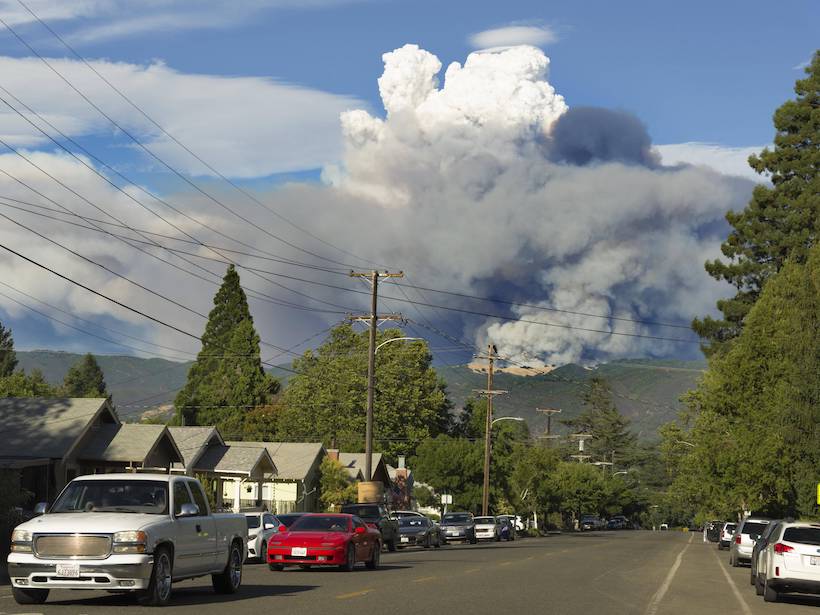Source: Earth’s Future
Recent years have seen the largest, most destructive wildfires on record in California. Accompanying these extreme events have been extreme levels of evaporative demand—the degree to which the atmosphere “wants” to evaporate water from plants and the ground, regardless of how much water is available.
A new analysis of global climate model simulations by McEvoy et al. suggests that evaporative demand will increase in California and Nevada through the end of the century, driving increased risk of more extreme wildfires and drought.
High evaporative demand—a “thirstier” atmosphere—can boost wildfire danger by drying out vegetation and making it more flammable. Previous research has explored how climate change will affect fire risk in the California-Nevada region, but the specific influences of future changes in evaporative demand have been unclear.
The researchers used a tool called the Evaporative Demand Drought Index to explore short-term (2-week) changes in evaporative demand that could affect fire risk. They also used the tool to examine longer-term changes in evaporative conditions that could help drive multiyear droughts.
The analysis predicts that by the end of this century, short-term extremes in evaporative demand in the California-Nevada region will become 6–10 times more common during summer and 4–6 times more common during autumn. This increase—driven primarily by rising air temperatures spurred by climate change—will significantly boost the risk of extreme wildfires. The researchers also show that the likelihood of extreme multiyear droughts will increase, potentially posing threats to water supplies in the region.
These new findings could help inform development of long-term strategies for wildfire and water resource management in California and Nevada. (Earth’s Future, https://doi.org/10.1029/2020EF001736, 2020)
—Sarah Stanley, Freelance Writer
Citation:
Stanley, S. (2020), “Thirstier” atmosphere will increase wildfire risk out West, Eos, 101, https://doi.org/10.1029/2020EO152099. Published on 02 December 2020.
Text © 2020. AGU. CC BY-NC-ND 3.0
Except where otherwise noted, images are subject to copyright. Any reuse without express permission from the copyright owner is prohibited.

